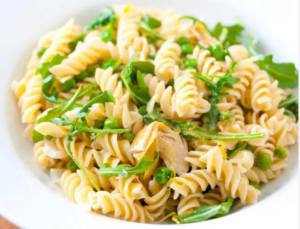Researchers have developed a new soft robot design that enables three simultaneous behaviors: rolling forward, spinning like a plate and following a path orbiting a center. The device, which operates without human or computer control, promises the development of soft robotic devices that can be used to navigate and map unknown environments.
The new soft robots are called twisted ringbots. They are made of ribbon-like liquid crystal elastomers that are twisted like noodles and then connected at the ends to form a bracelet-like loop.
When the robots are placed on a surface with a temperature of at least 55 degrees Celsius, which is hotter than the surrounding air, the part of the tape touching the surface will contract, while the part of the tape touching the air will not. This induces a rolling motion – the warmer the surface, the faster the robot rolls.
“The ribbon rolls around its horizontal axis, imparting momentum to the ring,” says Jie Yin, an associate professor of mechanical and aerospace engineering who authored the paper on the work. A spun ringbot also spins along its central axis like a record on a record player. And as the twisted ringbot moves forward, it orbits around the center, essentially moving in a big circle.
However, when the twisted ringbot encounters a boundary – such as the wall of a box, it moves along the boundary. “This behavior can be particularly useful for mapping unknown environments,” says Yin.
Twist ringbots are examples of devices whose behavior is controlled by physical intelligence, meaning that their actions are determined by their design and the materials they are made of, rather than controlled by computer or human intervention.
By designing the geometry of the device, the researchers are able to fine-tune the behavior of the twisted ring bot. For example, they can control the spin direction of the twisted ringbot by twisting the tape one way or another. The speed can be affected by changing the width of the tape, the number of turns of the tape, etc.
In proof-of-concept testing, the researchers showed that the coiled ringbot was able to follow the contours of various confined spaces.
“No matter where the twisted ring bot is inserted into these spaces, it can reach the boundary and follow the boundary lines to map the contours of the space – whether it’s a square, a triangle or some other shape,” said Fangjie Qi, one of the authors of the paper.
“We were also able to map the boundaries of more complex spaces by bringing two twisted ringbots into the space, with each robot rotating in a different direction,” says Qi.
Source: Science Daily

